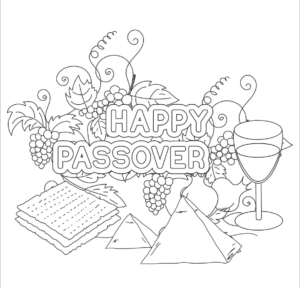310.474.0559 / webmaster@kahaljoseph.org
10505 Santa Monica Blvd., Los Angeles, CA 90025
310.474.0559 / webmaster@kahaljoseph.org
10505 Santa Monica Blvd., Los Angeles, CA 90025
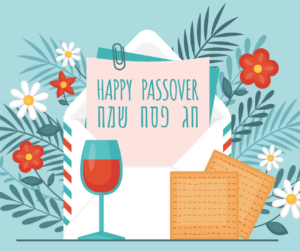

Dear members and friends of Kahal Joseph,
In my layman’s understanding of Passover, Mitzrayim, also known as Egypt, is the symbol of bondage, and Yerushalayim, or Jerusalem, is the symbol of freedom. Exodus is the journey we make, the path we travel, to grow in our lives.
Each time we open ourselves to change, Hashem guides us to freedom, our personal version of Yerushalayim, depending on the circumstances and challenges we face. The result may be physical, emotional, intellectual, or spiritual. As we move from a state where we feel stuck or trapped, we go through a process of development and understanding, until we emerge with a positive, life-enhancing mindset.
When we trust ourselves and Hashem, we surmount our obstacles. Success is when we plan wisely and devote constructive, positive energy. Success is when we care for others and share the generous gifts given us. Success, in our beautiful traditions, is to tell the story of bondage to freedom for generations to come.
Wishing you and those close to you a joyful, peaceful, healthy and abundant Passover,
Rafael Itzhaki, President
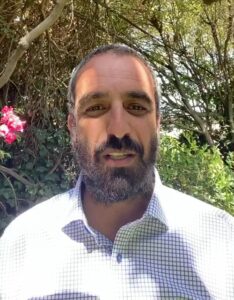
Shalom U’vracha,
We are reaching the special time of year when spring is upon us, and we are blessed with the holiday of Pesah. During this yearly season, we connect deeply to the energy of hope, envisioning and anticipating the positive, transformative influence of Hashem, an effect often called “redemption” or “salvation”. We express gratitude with the blessing “shehekheyanu v’kiyemanu v’higiyanu la’zman ha’zeh.” We thank Hashem for giving us life, sustaining us, and bringing us to this special time.
Annually, we are given the opportunity to tap the inner well of our soul and awaken our connection with Hashem, recognizing these resources as ever-present in our lives. Because we are souls in physical form, we live in a world of contradictions, paradoxes, and challenges which may, at times, shake us to our core.
Hashem has placed us in this realm to arouse hope in the face of despair, to shine our light in the murky dimness of this world. During Pesah, the festival of freedom, we experience the story of our people through the reading of the Haggadah. We relive the physical and emotional depths of slavery from which we rise up and reach spiritual freedom as a liberated people. Click here to read more . . .

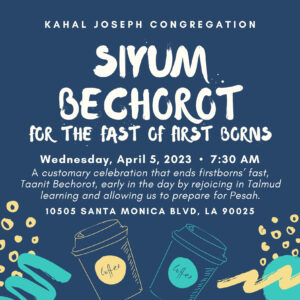
First Seder after dark: Wednesday, April 5th, Light Candles by 7:00 pm
Second Seder after dark: Thursday, April 6th, Light Candles after 7:56 pm
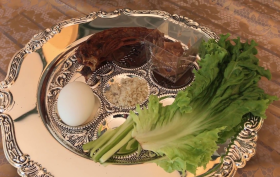
Iraqi Charoset
INGREDIENTS:
3/4 cup Date syrup (Silan) or date molasses
3/4 cup Finely chopped walnuts
INSTRUCTIONS:
Haroset is one of the special foods served as part the Passover Seder. A sweet, sticky spread, often with
a brownish hue, it reminds us of mud used by the Jewish people to make bricks during their
enslavement in Egypt millennia ago. It also tastes pretty amazing. We partake of sweet Haroset and
recite blessings as we remember the forced, harsh labor we endured as we built the pyramids and cities
of Pitom and Ramses. During the Seder, Haroset is eaten shortly before the main meal, heralding its
arrival, which sweetens haroset’s taste even further.
